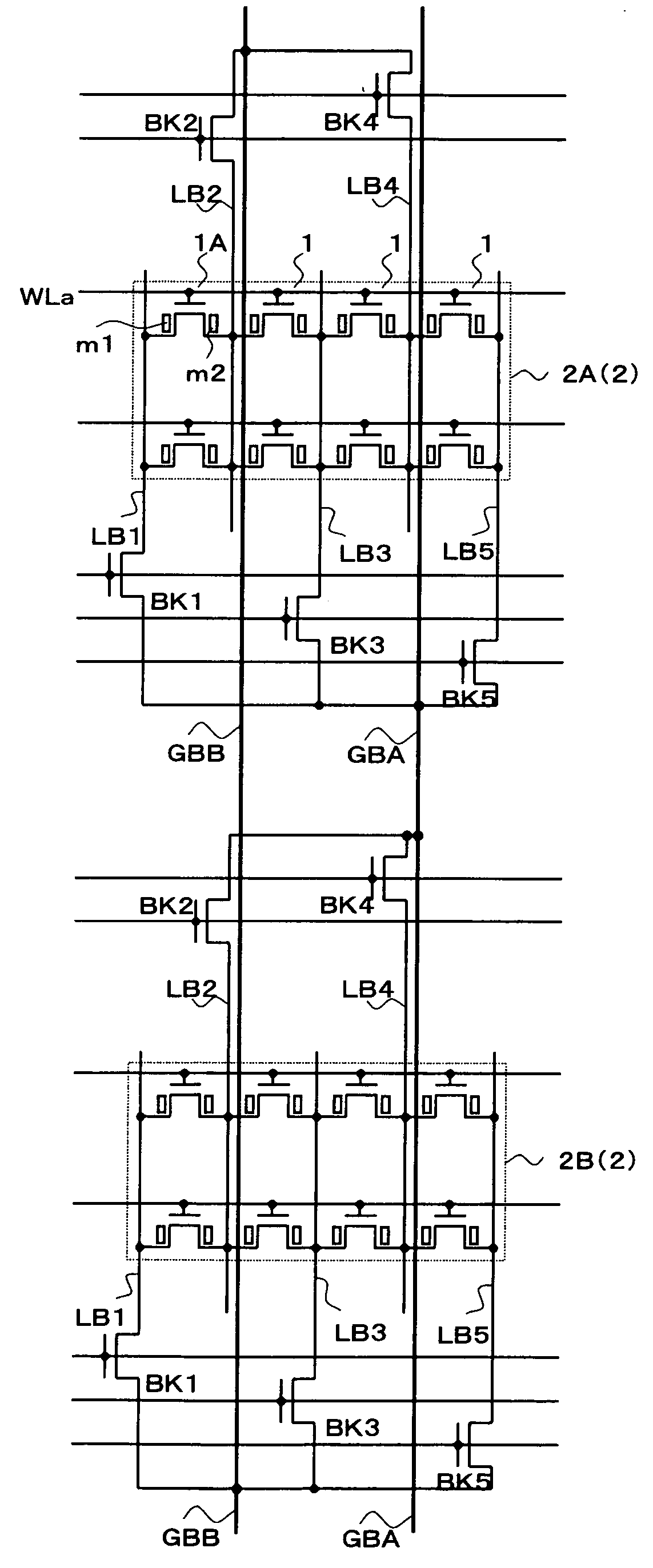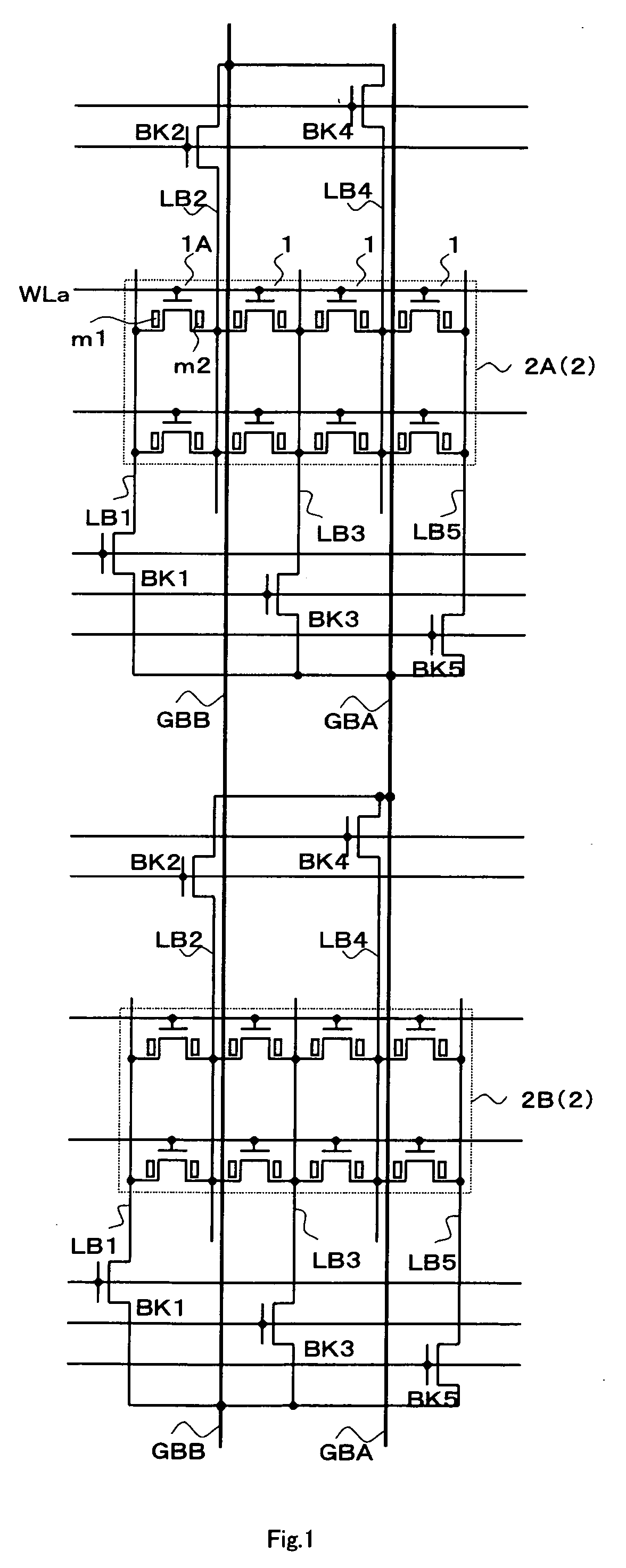Semiconductor memory device
a memory device and semiconductor technology, applied in the direction of digital storage, instruments, transistors, etc., can solve the problems of the wiring capacity of each main bit line counterbalancing with each other, and achieve the effects of preventing the lowering of the readout operation margin, reducing the detour outflow current through adjacent non-selected memory cells, and avoiding the delay in readout access tim
- Summary
- Abstract
- Description
- Claims
- Application Information
AI Technical Summary
Benefits of technology
Problems solved by technology
Method used
Image
Examples
embodiment 1
[0043]FIG. 1 is a circuit diagram simply showing a memory cell array structure of the device of the present invention. According to the memory cell array in the device of the present invention, a sub-array 2 is provided such that memory cells 1 are arranged with even numbers in rows and with plural numbers in columns in the shape of an array, and the sub-arrays 2 are arranged with plural numbers in rows and columns. FIG. 1 shows two sub-arrays 2A and 2B which are adjacent to each other in the column direction. Although the number of columns (the number of arrangements in the row direction) of the memory cells of each sub-array 2 shown in FIG. 1 is four, it may be another even number such as eight or sixteen other than four.
[0044] The memory cell 1 is a non-volatile memory cell comprising a gate electrode (a first electrode), a source electrode (one of second electrodes) and a drain electrode (the other of the second electrodes), and having a MOSFET structure in which memory content...
embodiment 2
[0049]FIG. 2 is a circuit diagram simply showing a memory cell array structure of a device of the present invention according to an embodiment 2. According to the memory cell array in the device of the present invention, a sub-array 2 is provided such that memory cells 1 are arranged with even numbers in rows and with plural numbers in columns in the shape of an array, and the sub-arrays 2 are arranged with plural numbers in rows and columns. FIG. 2 shows two sub-arrays 2A and 2B which are adjacent to each other in the column direction. Although the number of columns (the number of arrangements in the row direction) of the memory cells of each sub-array 2 shown in FIG. 2 is four, it may be another even number such as eight or sixteen other than four.
[0050] The memory cell 1 is a non-volatile memory cell comprising a gate electrode (a first electrode), a source electrode (one of second electrodes) and a drain electrode (the other of the second electrodes), and having a MOSFET struct...
PUM
 Login to View More
Login to View More Abstract
Description
Claims
Application Information
 Login to View More
Login to View More - R&D
- Intellectual Property
- Life Sciences
- Materials
- Tech Scout
- Unparalleled Data Quality
- Higher Quality Content
- 60% Fewer Hallucinations
Browse by: Latest US Patents, China's latest patents, Technical Efficacy Thesaurus, Application Domain, Technology Topic, Popular Technical Reports.
© 2025 PatSnap. All rights reserved.Legal|Privacy policy|Modern Slavery Act Transparency Statement|Sitemap|About US| Contact US: help@patsnap.com



